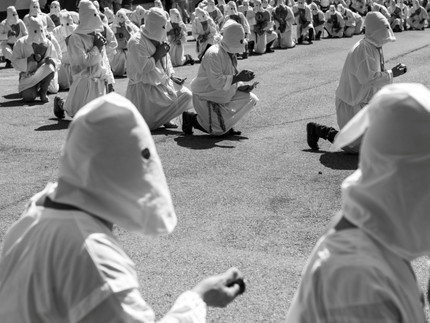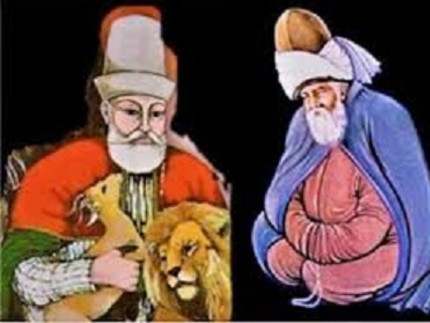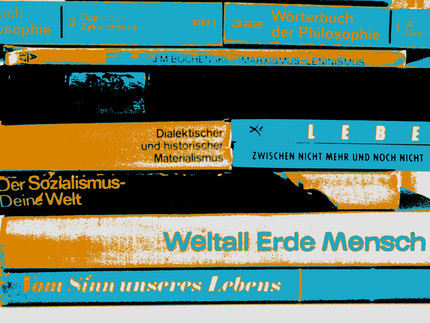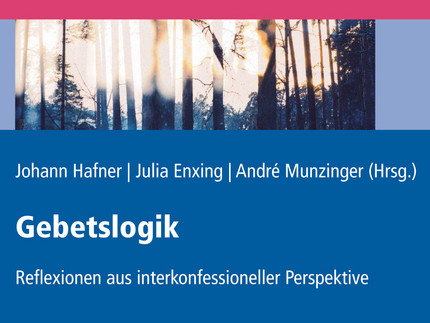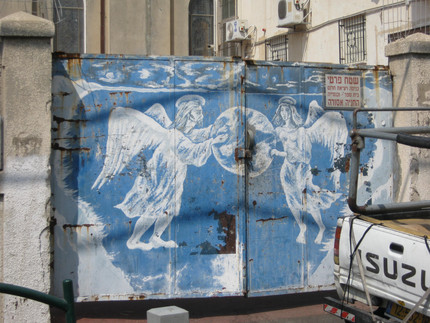Can mediatisation change the religious rites of the Assumption of the Madonna in Guardia Sanframondi?
Rita Fusco
My work is a field research on the ritual celebrations for the Assumption of Mary which take place every seven years in a small village in South Italy, Guardia Sanframondi. Here the feast of the Assumption is accompanied by the largest penitential rites in the Western world. In August 2017, around a thousand penitents walked through the village in a procession that lasted several hours, beating their chests in blood. At the Rites in the 2017, the village of about 5,000 people had more than 100,000 visitors, consisting of believers and spectators, according to the press. Although the organisers had repeatedly stressed that it was a religious celebration, the media presence was massive. Many international television crews came, including CNN, BBC and Al Jazeera team, and followed the processions. Until the Second World War, with a few exceptions, these rites were opposed by the church and state authorities as an expression of backward and superstitious popular religiosity. Today, however, the penitential character of the rites is emphasised and their value in spreading the Gospel message throughout the world has been officially recognised by the Catholic Church.
The aim of my research was to find out whether the development of media and social media has changed them. During the research, I lived for a few months in this small mountain village seventy kilometres from Naples. Afterwards, I returned regularly to Guardia Sanframondi because I wanted to understand these extraordinary rituals within the ordinary annual festive cycle.
The collective purification rite lasts for a whole week and thousands of people participate. This complex event ends with its most spectacular procession: the procession of the Battenti, which takes place on the last Sunday of the rites. The Battenti are believers who make a promise to the Madonna Assunta. They beat themselves with a penitential instrument called spugna which means 'sponge'. Such a spugna consists of a larger cork with needles stuck in it. The rites of Guardia consist of two different types of performances: the procession of the Battenti and the processions of the mysteries. For a week, until the epilogue of the procession of the Battenti, the whole village becomes the scene of religious performances. It is a set of representations in which the body plays a central role. The mysteries are reminiscent in their particularity of the mystery dramas of the Middle Ages, but unlike them, the scenes here are characterised by non-movement. The performers of the mysteries maintain the same rigid pose for the duration of the procession and in these scenes all participants remain absolutely silent. With the processions during the week, the community prepares itself for the final procession of the Battenti.
Public penitence can be considered one of the peculiarities of the rites of Guardia Sanframondi, because a penitent body is offered to the spectators during both the procession of the Battenti and the processions of the Mysteries. Without wishing to simplify, we can summarise by saying that the model of the Passion of Christ, which follows the paradigm of death and resurrection, undoubtedly places the moment of expiation at the centre of the purification rites.
In my work, I approach some of the most important thematic issues within ritual studies in this limited ethnological context: on one hand, I examine the historical transformations of ritual and its capacity for change; on the other hand, I consider aspects that continue unchanged in the present as well as those that have taken on new meaning.
My research, based on observation of the rites in Guardia Sanframondi as they are today, also included a parallel work of a historical nature. The aim of the historical work was to question and put into perspective oral traditions in which rites are often presented as something that has remained unchanged over time. The ethnological research was therefore accompanied by archival research, which allowed me to consider the rituals against the background of historical, social and cultural development.
The components of the entire event and its historical development have been the subject of extensive, long-term and multidisciplinary research led by Prof. J. Hafner. The research is now in its final phase, and new perspectives have emerged that broaden our knowledge of the Guard rituals.
Religious Studies: Research Projects
Social Integration and Religion: A case study on Alevi-Sunni socio-religious relationships in mixed villages in Çorum
Birol Topuz
Alevi-Sunni relations in Turkey, unfortunately, often intertwined with the superficiality of a meaningless, political debate, it has been the subject of speculation or contention. This socio-religious phenomenon, which each group tries to define according to itself, has always been a social problem.
Alevism, which is a part of this discussion, has been called by many different names according to the regions and periods it has been in. Alevism is a socio-cultural structure for some, and a socio-religious structure for others. This social structure has been the subject of debate in Turkey almost every period. Alevis, who were known to have lived separately with the Sunni group in the past, started to live together with Sunnis especially in big cities with the effect of industrialization and migration. However, despite this, it is observed that Alevi and Sunni groups live together in the same villages in some rural areas in a very small number.
Even so, Alevis often had to hide their thoughts and beliefs due to some bad experiences they had in the past. However, in these five villages where research was conducted, it was observed that Alevis lived together with their Sunni neighbors without hiding their own beliefs and thoughts. In this respect, the primary purpose of this study has been to try to understand the reasons for the harmonious association between these two groups. Because in here, it has been observed that Alevis openly held cem ceremonies and even their Sunni neighbors attended some ceremonies.
Almost every month, news of conflict and debates between Alevi-Sunnis are reflected in the media. In such an environment, it is noteworthy that in these five selected villages of Çorum, Alevi-Sunnis have lived together in harmony for years. It is known that there are some differences between these two groups in their beliefs and practices that are accepted by everyone, and this case sometimes causes conflicts. However in these villages, do the Alevis-Sunnis really live in harmony as seen from the outside? How did they ensure this social cohesion together with their own differences? If there is a partial integration in these villages, which areas does this integration mostly cover? Are the factors that strengthen this integration and harmony, religious or cultural factors? And how does the presence of both a Mosque and a Djemevi in villages, where this harmony is observed, affect this integration? These and some other similar questions were accepted as a problem and research was started.
In this respect, this research tries to understand the sociological aspects of the relations of Alevis and Sunnis living together in today's Turkish society. In addition, it was aimed to determine the elements that ensure this harmonious coexistence seen in rural life. And so it aims to make a contribution to understanding and explaining these two socio-religious groups.
The difficulties of sociological research is known by nearly all researchers. However, doing empirical research, especially on issues such as Alevi-Sunni was made of intense debate in Turkey, is quite difficult. Conducting a part of this research on 15 July 2016 in Çorum, where the "1980 Çorum Upheavel" previously took place, made the research even more difficult.
Nonreligiousness in Eastern Germany
The research project Nonreligiousness in Eastern Germany examines to what extent lifestyles, norms and ideologies in Eastern Germany constitute reactions to the secularization enforced by the former communist regime. Considering the current Ostalgie – represented in products and attitudes – it seems obvious that attitudinal aspects of the GDR are still present in Eastern Germany in forms of a voluntary secularism, albeit bereft of the former ideological underpinnings. This is evidenced with the lasting popularity of the Jugendweihe (youth dedication ceremony), but also with the adaptation of churchly wedding rites at civil marriage ceremonies and some positions of radical left-wing parties.
- Panel „Remote effects of secularization in Eastern Germany”, XXI. World Congress of the International Association for the History of Religions, 23th-29th August 2015, University of Erfurt (Jenny Vorpahl, Dirk Schuster, Prof. Dr. Johann Ev. Hafner, Dr. Hans-Michael Haußig)
- Panel: „Theoretical and empirical approaches to the relationship between religion and nonreligion in Germany”, ISORECEA Conference 2016: “Religion and Non-Religion in Contemorary Societies”, Zadar, Croatia, 21th–24th April 2016 (conduct: Jenny Vorpahl and David Schneider)
- Jenny Vorpahl: The ritual design of civil marriage ceremonies in Germany. Lecture in the panel „Not religion, but not without religion. Representations of nonreligious ideas, forms and practices“, Conference of the European Association of the Study of Religions: „Relocating Religion“, Helsinki, Finnland, June 28th – July 1th 2016.
- Dirk Schuster: The evaluation of the science of atheism in the GDR by policy makers. Lecture in the panel „Nonreligion and Atheism in Central and Eastern Europe“, Conference of the European Association of the Study of Religions: Relocating Religion, Helsinki, Finnland, June 28th – July 1th 2016.
- Habilitation project: What Comes After Religion? Atheistic concepts of the dying out of Religion. (Dirk Schuster, 2015-2020)
- Religiosity in Potsdam/Brandenburg: In the city of Potsdam there are about 80 religious communities. Confronted with their secularized environment, most went into “hibernation mode’. Where are they to be found? How interconnected are they? What role does the turnaround of 1989/90 play in the history of their communities? When do Yoga studios and freethinking groups become part of the religious scene? We envision and are planing a book with articles and portraits encompassing statements of faith, rites, locality and structures (Prof. Dr. Irene Becci, Lausanne, Prof. Johann Hafner 2012-2016).
Practice and Reflection on Prayer
of Baptists, Christian Catholics, Protestants, Catholics, Methodists and in Religious Studies
See also: Johann Hafner/Julia Enxing/Andre Munzinger (Eds.): Gebetslogik. Reflexionen aus interkonfessioneller Perspektive (Logic of Prayer. Reflections from an Interdenominational Perspective), Leipzig 2015, ca. 200 pages.
Lower Transcendencies: Angels and Intermediary Beings
Even in so-called monotheistic religions, beings who are neither human nor divine (angels, demons, aeons, spirits) are persistently thought of below the high deity. They enjoyed wide popularity, especially as they meet the need for healing, information and speculation. Using system-theoretical considerations, the "necessité de l'angélologie" (H. Corbin) and the differentiation of various transcendencies will be reconstructed. Currently, a volume is emerging on the origins of biblical mediators and their ramifications in apocryphal, Gnostic and other 'heterodox' traditions.
See also:
- Hafner, Johann Ev.: Religionswissenschaftliche Kategoriebildung - am Beispiel 'Engel'. In: Stausberg, Michael (Ed.): Religionswissenschaft. Berlin 2012, pp. 155-168.
- Hafner, Johann Ev.: Wozu dienen Engel? Zur Funktion niedriger Transzendenzen. In: Jung, Hermann (Ed.): Symbolon, Jahrbuch Band 18, Frankfurt/M. 2012, pp. 159-183.
- Hafner, Johann Ev.: Die Engel im Christentum. In: Franzl, Klaus Peter/Hahn, Sylvia/Haßlberger, Bernhard (Eds.): Engel. Mittler zwischen Himmel und Erde. Freising 2010, pp. 40-59.
- Hafner, Johann Ev./Diemling, Patrick (Ed.): Die Kommunikation Satans. Einflüsterungen, Briefe, Gespräche des Bösen. Frankfurt a.M. 2010.
- Hafner, Johann Ev.: Angelologie. Paderborn 2009.
- Hafner, Johann Ev.: Engelssprachen – einfache Doppelkontingenz. Ein Beitrag zur Kommunikationstheorie. In: Ebertz, Michael N./Faber, Richard (Eds.): Engel unter uns. Soziologische und theologische Miniaturen. Würzburg 2008, pp. 91-99.
PhD Projects
- Stichwörter der Wortfamilie ,Jude‘ in einsprachigen deutschen Wörterbüchern des 19. Jahrhunderts (Daniela Schmidt, 2014-2017)
- Religiöse Reaktionen auf das Erdbeben in Haiti 2010. Feldstudie unter Voodoo-Hougans, katholischen Priestern und baptistischen Pastoren (Stefanie Fischer 2014-2017)
- Schopenhauer's Doctrine of Salvation in Relation to his Critique of Religion and Philosophical Teachings (Anil Dominic Batti 2013-2016)
- Die Verwendung des Engel-Motivs bei postreformatorischen Predigern: John Wesley, Charles H. Spurgeon, Ellen G. White, Billy Graham (Benjamin Klammt 2013-2017)

